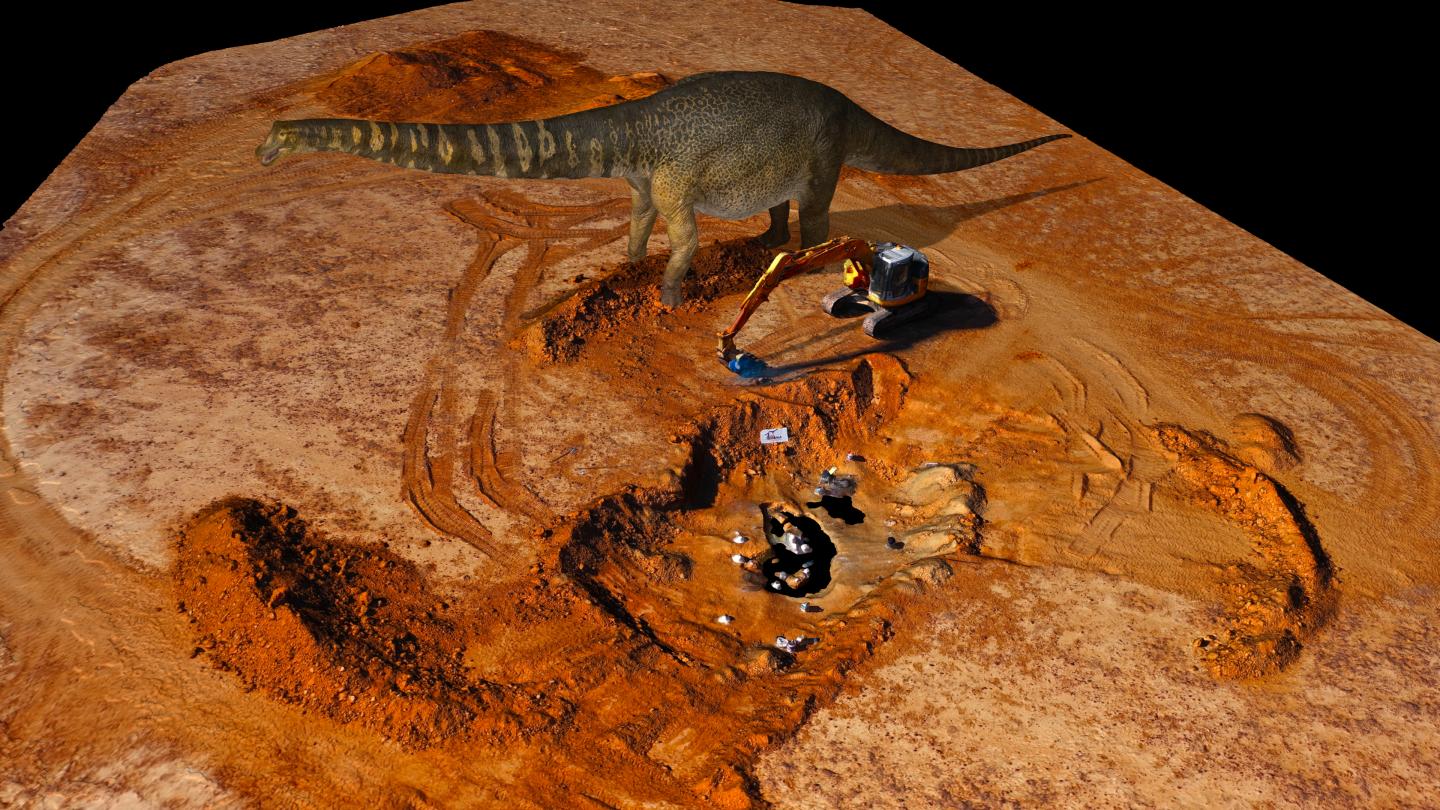Newly classified dinosaur species is Australia’s largest
The dinosaur would have been 6.5m tall and 30m long, making it one of largest to roam the planet

Your support helps us to tell the story
From reproductive rights to climate change to Big Tech, The Independent is on the ground when the story is developing. Whether it's investigating the financials of Elon Musk's pro-Trump PAC or producing our latest documentary, 'The A Word', which shines a light on the American women fighting for reproductive rights, we know how important it is to parse out the facts from the messaging.
At such a critical moment in US history, we need reporters on the ground. Your donation allows us to keep sending journalists to speak to both sides of the story.
The Independent is trusted by Americans across the entire political spectrum. And unlike many other quality news outlets, we choose not to lock Americans out of our reporting and analysis with paywalls. We believe quality journalism should be available to everyone, paid for by those who can afford it.
Your support makes all the difference.After over a decade of careful analysis, scientists have classified a giant dinosaur – first discovered in Australia in 2007 – as a new species that was one of the largest to roam the planet.
According to paleontologists, including those from the Queensland Museum in Australia, the new species Australotitan cooperensis, or the “southern titan,” was “as long as a basketball court”, and would have been up to 6.5m tall and 30m long – making it one of the 15 largest dinosaurs ever found, and the largest of the continent.
The skeletons, first discovered on a sheep and cattle farm in the Australian outback in 2006, were only found to belong to a dinosaur the following year.
Then with years of analysis of the bone scans, paleontologists could distinguish the titanosaur from other known giant dinosaurs of this time period 92-96 million years ago, known as the mid-Cretaceous Period.
“To make sure Australotitan was a different species, we needed to compare its bones to the bones of other species from Queensland and globally. This was a very long and painstaking task,” Scott Hocknull from the Queensland Museum explained in a statement.
The research revealed that the dinosaur belonged to a class of giant plant-eating dinosaurs called sauropods that had small heads, very long necks, long tails and thick, pillar-like legs.
“Using 3-D surface scan models we compare features of the appendicular skeleton that differentiate Australotitan cooperensis gen. et sp. nov. as a new taxon,” the scientists wrote in the study, published in PeerJ - the Journal of Life and Environmental Sciences.
The researchers say the 3D scan technique allowed them to digitally recreate the skeleton of the dinosaur, which they named Cooper after the nearby Cooper Creek where it was found.
“The 3-D scans we created allowed me to carry around 1000s of kilos dinosaur bones in a 7kg laptop. Better yet, we can now share these scans and knowledge online with the world,” Mr Hocknull said.
He believes the current discovery is just the tip of the iceberg.
“Our ultimate goal is to find the evidence that tells the changing story of Queensland, hundreds of millions of years in the making. A grand story all scientists, museums and tourists can get behind,” Mr Hocknull added.
Join our commenting forum
Join thought-provoking conversations, follow other Independent readers and see their replies
Comments